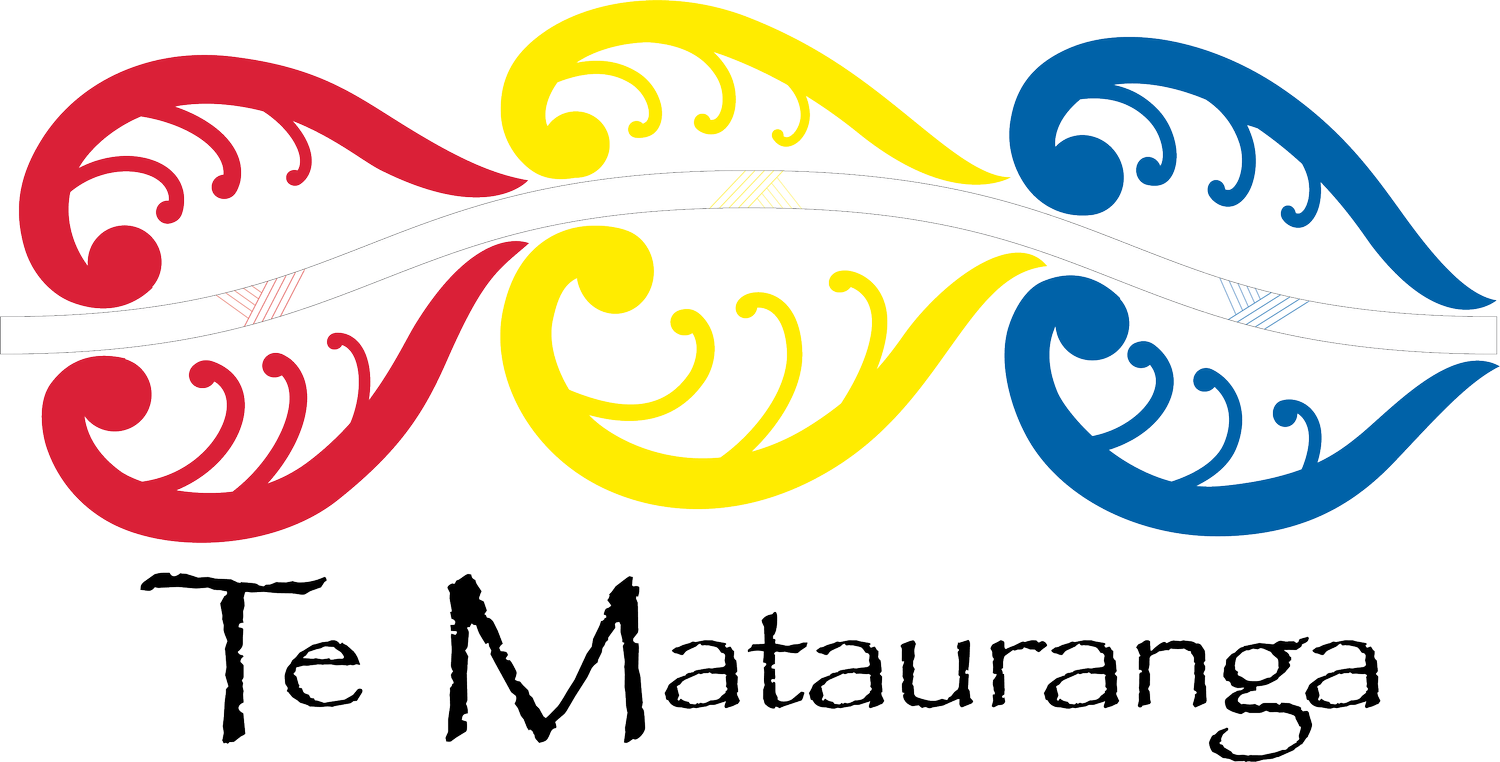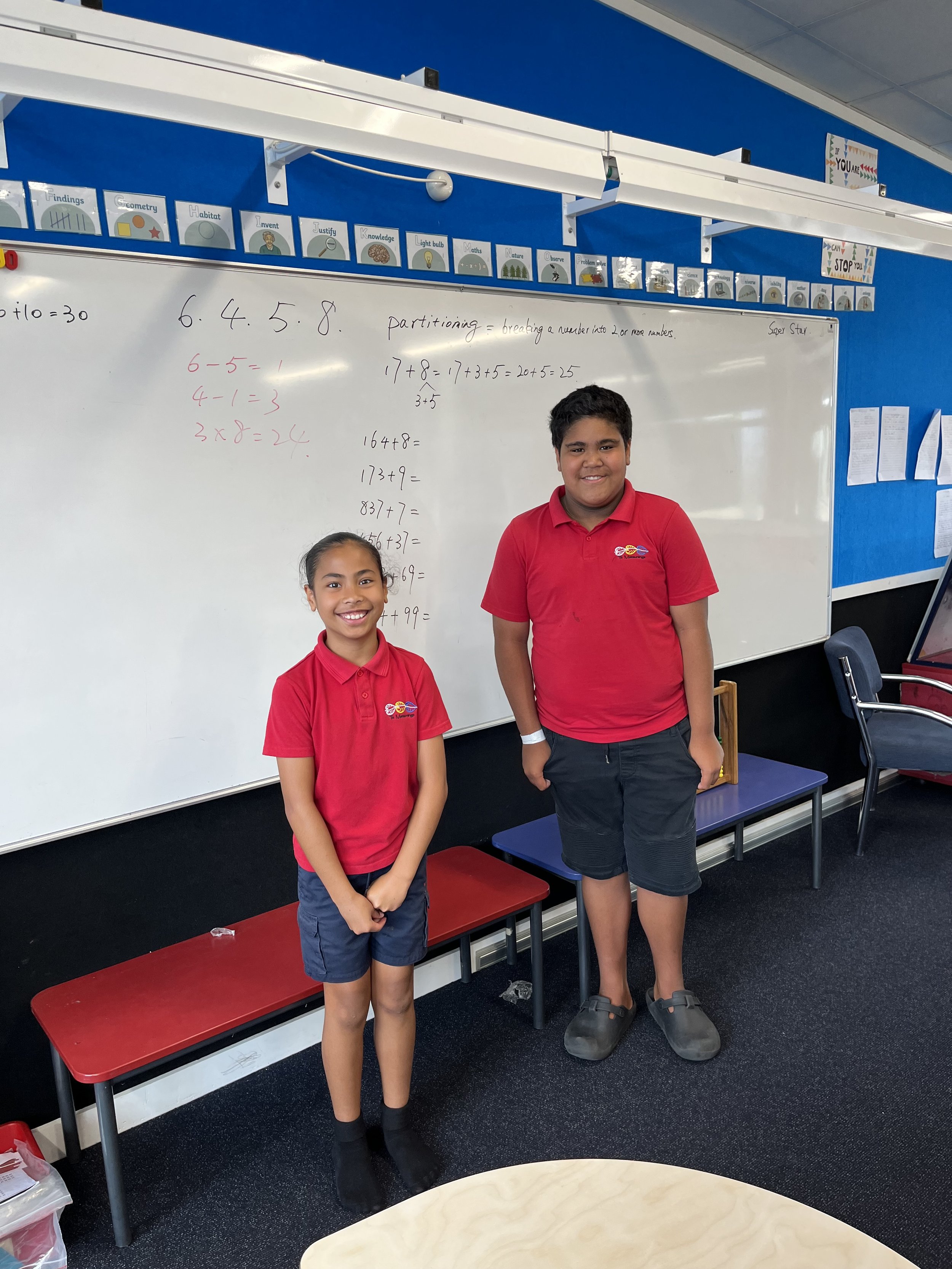students in room 19 are performing to celebrate Samoan Cultural Week
Students from room 18 are celebrating Maori Language Week
Room 19 - Term 3 2025 Program Overview
Welcome to Term 3 in Room 19! We are excited for a term packed with engaging learning experiences across Mathematics,English Literacy and Pathway Learning. Here’s an outline of what we’ll be exploring:
Mathematics-Unlock Your Child’s Potential with Our Exciting Term Plan!
Weeks 1–3: Number (Addition & Subtraction) | Algebra | Financial Mathematics | Geometry | Measurement
Identify, read, write, compare, and order whole numbers up to 1,000,000 using base-10 structure.
Add and subtract whole numbers accurately.
Round whole numbers to a specified power of 10, and round decimals (tenths and hundredths) to the nearest whole number or one decimal place.
Use rounding, estimation, and inverse operations to check the reasonableness of calculations.
Solve real-life problems involving purchases and budgeting.
Create simple financial plans, such as shopping lists or family budgets.
Form and solve true or false number sentences and open number sentences using all four operations and the concepts of equality and inequality (e.g., 8 × 7 < 8 × 5 + 8 – True or False?).
Weeks 4–5: Measurement | Geometry (Shape and Angle)
Visualise, measure, and draw angles to the nearest degree, up to 360°.
Estimate and accurately measure length, mass (weight), capacity, and temperature using appropriate metric units.
Select the correct tool and unit for different types of measurement.
Convert between common metric units (e.g., mm to cm, g to kg, mL to L) and express parts of measurements using decimals.
Weeks 6–9: Number (Multiplication & Division) | Algebra | Geometry | Measurement
Identify square numbers and factors of numbers up to 125.
Recall multiplication and division facts to 10 × 10.
Multiply multi-digit whole numbers (e.g., 54 × 112).
Divide up to four-digit numbers by one-digit divisors with remainders (e.g., 198 ÷ 7, 4154 ÷ 8).
Use known facts to solve scaling problems.
Calculate the area of rectangles and right-angled triangles (cm², m²) and the volume of rectangular prisms (cm³) using multiplication.
Form and solve number sentences involving all four operations and apply understanding of equality/inequality (e.g., 8 × 7 < 8 × 5 + 8 – True or False?).
Week 10: Probability | Number (Fractions)
Conduct investigations involving chance, including unequal outcomes, by:
Posing an investigative question
Identifying and predicting possible outcomes
Using theoretical models or carrying out experiments
Recording and visualising outcomes
Calculating and expressing probabilities as fractions
Comparing predicted and actual outcomes
Reflecting on results and answering the original question
At Year 6 level, compare experimental results with theoretical probabilities, where appropriate.
Identify, evaluate, and justify statements made by others in relation to chance-based outcomes, using data as evidence.
English Literacy Learning Overview – Term 3, 2025
READING
Written Word Production (The Code)
Review Term 1 key learning.
New learning includes:
List 54: Unusual spelling patterns
List 55: Schwa vowel (2)
List 56: Plurals ending in f or fe
Suffixes that turn words into nouns (e.g., -logy, -ism, -ment)
Apply learning through inquiry into morphology and etymology using root words, prefixes, and suffixes from List 66 and class texts.
Student Capabilities:
Decode multisyllabic words using knowledge of morphology and syllables.
Demonstrate reading stamina with longer texts.
Reflect on reading strengths and explore a variety of texts.
Read year-level texts with fluency, accuracy, and appropriate expression.
Language Comprehension
Understand and interpret idioms and expressions from own and other cultures.
Identify how audience and purpose shape a text’s structure and language.
Compare texts across cultures to discuss differences in style and purpose.
Recognise how cultural values influence language and visuals in texts.
Use reading strategies such as annotating, rereading, visualising, and adjusting reading rate.
Summarise main ideas and use evidence to support conclusions and inferences.
Discuss and compare interpretations with others, using evidence from the text.
Critical Analysis
Explain how author choices shape portrayal of people and groups.
Discuss impact of these choices on reader understanding.
Connect ideas in texts to cultural values and practices.
Reflect on personal and others’ interpretations and the influence of cultural background.
Extend discussion with thoughtful questions and evidence.
Recognise when collective agreement can or cannot be reached in interpreting a text.
WRITING
Written Word Production
Maintain consistent writing posture and type efficiently using correct finger placement.
Type sentences and paragraphs accurately with proper punctuation and formatting.
Spell:
Words with the schwa vowel sound
Plurals of words ending in f/fe (e.g., leaf → leaves)
Words with noun-forming suffixes (e.g., -logy, -ism, -ment) with understanding of meaning
Language Expression
Expand sentences with adjectival phrases and appositives (e.g., The car, shiny and red...).
Write complex sentences and explain sentence structure choices.
Use commas in complex sentences and for appositives accurately.
Link ideas using logical connectors (e.g., as a result, in contrast).
Use figurative devices like similes, metaphors, idioms, oxymorons, and imagery to add richness.
Consider audience and purpose to guide word choice, tone, and content.
Develop engaging narratives with multiple settings and deep characterisation.
Write informative texts with precise vocabulary, examples, and organised paragraphs.
Construct persuasive texts using emotive language, structured arguments, and strong conclusions.
Create digital texts that combine visuals, audio, and written elements effectively.
Edit digital content for clarity using design and formatting tools.
The Writing Process
Gather and organise information from print and digital sources into categories.
Plan and write for a range of audiences and purposes.
Revise writing at structure and paragraph levels for logical flow and cohesion.
Independently edit for grammar, punctuation, and clarity.
Use dictionaries (print or digital) to check spelling and word meaning.
Learning Pathway Overview: Team Building (FLL Context)
VALUED OUTCOMES FOR STUDENTS: Tamariki are able to co-operate and communicate effectively to achieve a collective goal. They demonstrate inclusion, active listening, understanding of roles, teamwork, and empathy in a variety of contexts.
ACHIEVEMENT OBJECTIVES:
Health and Physical Education: Relationships with Others
Social Sciences: Understand how people work together to achieve goals
Key Competencies: Relating to Others, Participating and Contributing
English: Speaking, Listening, Reading, Writing (Language and Text Features)
LEARNING INTENTIONS:
I am learning to recognise the difference between a group and a team
I am learning how to contribute to a team respectfully and inclusively
I am learning how to be a good listener and communicator
I am learning about roles in teams and how to support each other
I am learning how to reflect on team experiences and set goals
CONTEXT: Students will participate in structured activities exploring team building concepts. These include defining teamwork, identifying good team traits, practising inclusive behaviour, exploring real-world teams, role-playing, and listening games. The context will connect to the FLL theme of archaeology, promoting teamwork in inquiry-based, hands-on learning.
SUCCESS CRITERIA:
Students can clearly explain what makes a team different from a group
Students can demonstrate inclusion and kindness in team settings
Students can explain the value of different team roles and show flexibility in trying them
Students can practise active listening and provide thoughtful responses
Students work together respectfully to complete team challenges
What is going on for my learners? Some students find it difficult to collaborate or share ideas. Others need support to include peers or take on a variety of roles. There is a need to strengthen listening and communication skills to support learning and collaboration.
What are the strengths of the learners? Many students enjoy practical, game-based learning and show curiosity when engaged in real-world contexts. They are enthusiastic about team challenges and show leadership potential.
What are the needs of the learners? Students need consistent support to practise inclusivity, active listening, and respectful communication. Some need help stepping into different team roles and reflecting on how they contribute to the group.
Matching student needs to the curriculum:
Health & PE: Demonstrating empathy and inclusion
English: Interpreting and using expressive language and text features
Social Studies: Exploring group behaviour, contribution, and leadership
Key Competencies: Participating and contributing, relating to others, managing self
Activities to support learning:
Team vs Group Sorting Game
Team Detective (researching real-world teams)
Design the Ideal Team & Mascot
Role Plays: Inclusive vs Exclusive
Puzzle activity to demonstrate inclusion
Team role simulation & rotation games
Listening Charades & Interview activities
Archaeology inquiry (linking to FLL)
Amazing Race (team challenge)
What will I see and hear if a student is AT curriculum level 3?
Clear explanations of teamwork vs group behaviour
Use of inclusive language and actions
Willingness to take on varied roles
Use of body language to support listening
Reflection on team dynamics and contributions
Sharing examples from real-life teams or class experiences
Active participation in discussions, games, and presentations
Co-Curricular Links:
School Values: Manaakitanga, Kaitiakitanga, Kotahitanga, Rangatiratanga
Inquiry: Archaeology (FLL Theme)
Digital Tech: Presentations and posters
Arts: Mascot creation and visual storytelling
Timeframe: Ongoing over Term 3 (3-4 times per week)
Desired Outcome: Confident, inclusive team players who communicate clearly, listen actively, contribute responsibly, and support their peers in working towards shared goals in learning and life.
Kia Ora Room 19 Whanau. It has been an exciting learning journey for our room . We had the pleasure to meet and know about each other . In Room 19 we believe that learning never stops . We always encourage and take care of each other .
We try our best , We do our best , Because we are the best “
In Room 19 , our theme is focused on exploriing, participating and contributing to build a joyful learning environment
Congratulations to Diamond, Azriel and Wisdom for winning 100% Attendence Award!
Riyansh won the Award as Leraner of the Week
Diamond and Albert are our Environment Monitors
Grace and Nixon are our Activity Monitors
David and Riyansh become the Food Monitors
Nixon and Simi are so happy to be the Superstar of Maths game called Getting 24. 30/01/2025
Nixon became Learner of the week
3/02/2025
YOUR BRAND
YOUR BRAND
Eli won a principal award for his contribution on ourschool fun day
Naira became Learner of the Week
YOUR BRAND
YOUR BRAND
Annabelle won the award of Learner of the week
Naira, Diamond, Alifeleti, Riyansh and Dishant became winners of awards for being amazing in learning, classroom tidying up and respecting school rules as well as showing good manners
















